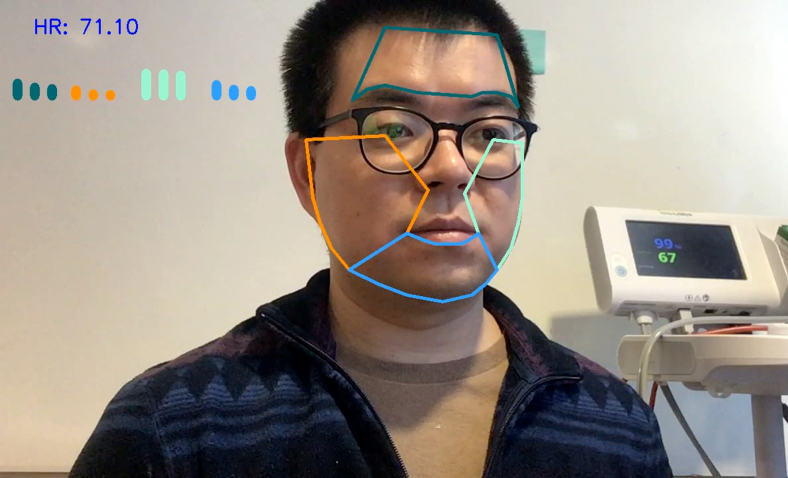The locally developed AI-based Remote Patient Monitoring System uses video images of a patient’s face to accurately measure their heart rate without the need for any additional devices.
The technology is designed to work with consumer level cameras, like the ones already attached to computers and tablets, and can be further developed to measure additional statistics such as blood pressure, oxygen, pain and anxiety levels.
Professor Jinman Kim of the Telehealth and Technology Centre at Nepean Hospital says that developments in AI are the latest frontier in advancing remote patient care, aiming to replace more inconvenient and potentially less accurate methods of remote patient monitoring, such as blood pressure cuffs and wearable sensors.
“For a long time, we’ve been focused on how to make video conferencing easier and more widely available, but that problem has now largely been solved,” says Professor Kim.
“Now we’re looking at how to maximise information from videos to improve the range and quality of remote patient care.”
While similar technology is beginning to take hold internationally, the system being developed at Nepean Hospital is uniquely localised to suit specific patient cohorts.
“The use of facial expression to measure things like anxiety is well documented but we are particularly interested in measuring heart rate and our focus on cardiology is quite unique,” says Professor Kim.
By narrowing the scope of the project very specifically, the team can optimise the AI for accurate use in cardiology while maintaining the highest possible standard of data security, preserving patient privacy.
The technology is a form of photoplethysmography, which uses light to monitor blood flow changes under the skin and thereby measure cardiovascular activity signals.
The new AI-based Remote Patient Monitoring System adapts these techniques to interpret the light signals that render video images of human faces, automating and improving aspects of patient monitoring over the course of a normal video consultation.
“My vision is that every telehealth appointment will produce additional, reliable health information that is completely free and doesn’t involve asking the patient to do anything extra,” says Professor Kim.
So far, the technology has been trialled successfully on public data sets. Now with full ethics approval it is entering a clinical trial in partnership with the NBMLHD’s Cardiology department.
“This technology provides an opportunity to further simplify the requirements for patients,” says Professor Kim.
“It’s a true, multidisciplinary effort between computer scientists and health experts and a great example of what good collaboration can achieve.”
